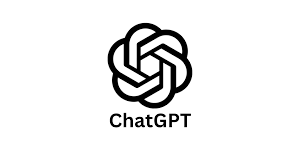ChatGPT is a state-of-the-art AI tool developed by OpenAI. It uses advanced language models to generate detailed, contextual, and accurate text based on the prompts it is given. Let’s look at a step-by-step guide on how to start using ChatGPT, which involves accessing the API, making API calls, and understanding the responses. We will also include sample code snippets to help you better grasp the process.
- Accessing the API
The first step towards utilizing ChatGPT is gaining access to the API. The API, or Application Programming Interface, is the medium through which different software applications interact with each other. To gain access to the ChatGPT API, you need to visit OpenAI’s website, sign up, and request access. Please note that API usage is subject to OpenAI’s usage policies.
- Setting up the API
After receiving access, OpenAI will provide you with an API key. This key is required to authenticate your requests to the API. The setup process can be carried out in your programming environment, such as Python. First, install the OpenAI API client using pip:
pip install openaiThen, you can import it into your project and set up the API key.
import openai
openai.api_key = 'your-api-key'Please ensure to replace ‘your-api-key’ with your actual API key.
- Making an API Call
A conversation with ChatGPT typically involves a series of messages, with a model-generated message serving as a response. Messages possess two properties: ‘role’ and ‘content’. The ‘role’ can be ‘system’, ‘user’, or ‘assistant’, while ‘content’ is the actual text of the message.
response = openai.ChatCompletion.create(
model="gpt-4.0-turbo",
messages=[
{"role": "system", "content": "You are a helpful assistant."},
{"role": "user", "content": "Who won the world series in 2020?"},
]
)Here, the system message is used to set the assistant’s behavior, while user messages instruct the assistant.
- Understanding Prompts
Prompts are the inputs you provide to the model. The structure and context of the prompt influence the response generated by the ChatGPT. For instance, if you’re looking to draft an email, your prompt could look like this:
response = openai.ChatCompletion.create(
model="gpt-4.0-turbo",
messages=[
{"role": "system", "content": "You are an assistant that helps draft emails."},
{"role": "user", "content": "Draft an email to my team about a meeting tomorrow."},
]
)- Interpreting Responses
Once you make an API call, ChatGPT responds with a message containing the ‘role’ and ‘content’. The ‘role’ will be ‘assistant’, and ‘content’ will contain the text generated by the assistant.
print(response['choices'][0]['message']['content'])- Managing Tokens
Each API call consumes a certain number of tokens, which is the unit the model reads and writes in. Tokens can be as short as one character or as long as one word. Both input and output tokens count towards this limit. It’s crucial to manage your tokens to avoid exceeding the model’s maximum limit.
message = "Translate the following English text to French: '{}'"
len(openai.api.encode(message))- **Fine-Tuning the Model**
For specific tasks, you may wish to fine-tune the model. OpenAI provides guidelines for this process. However, fine-tuning requires an understanding of machine learning and may not be necessary for most general tasks.
# This requires a custom training process, which is beyond the scope of this tutorial.Step-by-step guide with code samples:
- Visit OpenAI’s website and sign up for API access.
- Install the OpenAI API client in your environment.
- Set up the API key in your environment.
- Create a system and user message to provide context for the assistant.
- Make an API call and interpret the response.
- Understand the token usage to stay within the model’s maximum limit.
- For specialized tasks, consider the possibility of fine-tuning the model.
In conclusion, starting with ChatGPT involves understanding how to access and use the API, structuring effective prompts, and managing tokens efficiently. With the above guide and code samples, you are now equipped to explore the capabilities of this advanced AI model. Remember, as with any powerful tool, it’s essential to use ChatGPT responsibly. Its potential is vast, and when used ethically and thoughtfully, it can be an invaluable asset in numerous fields, from creative writing to customer service to education.












